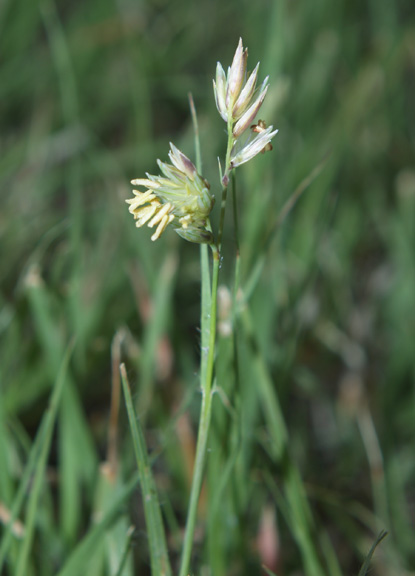Common Name: Buffalograss
Species Name: Buchloe dactyloides
Description: Buffalograss is a short grass with greyish green, slightly hairy leaves that can grow up to 10 centimeters (4 inches) long. The Lakota name translates as “grass that sticks to people’s clothes.” Male and female plants are strongly dimorphic (physically different). Female flowers are hidden by the leaf blades and enclosed in a bur-like structure held on a short stalk near the ground. Male flowering stems are more clearly visible and can be up to 20 centimeters (8 inches) tall. Male flowers are held on stalks above the leaves in one-sided clusters that can be up to 15 millimeters long. The orange pollen of the male flowers makes Buffalograss fairly distinctive during its peak
blooming period.
Where it can be found: In Manitoba it is found along the Souris and Blind River valleys in clay to loam soils along the lower slopes of hills and ridges and along gradual slopes of river and creek valleys. It is tolerant of grazing, and is often found in native pastures. Buffalograss is found in either shortgrass or mixedgrass prairie stands, where it’s resistance to drought gives it a competitive edge over less drought-tolerant vegetation.
Threats: Major threats to Buffalograss in Manitoba are the destruction native prairie stands for agricultural use, road building, oil extraction, and pit-mining. Fire-suppression may also be limiting the species.
Information Sources: SARA Registry, Manitoba Conservation, US National Park Service
Species At Risk Profile: Buffalograss
